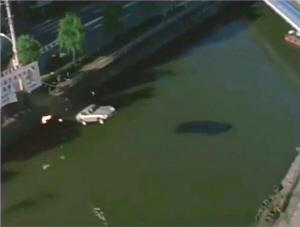Test Facility
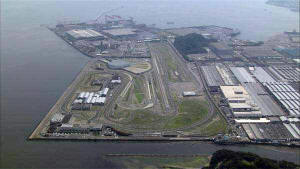 (Click here for full page video)
(Click here for full page video)The Oppama test track facility was used for many of the 240z's driving tests from 1967 to 1969.
Endurance Testing
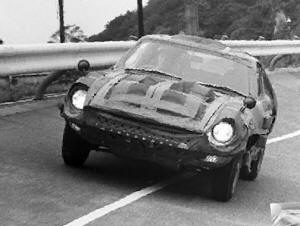
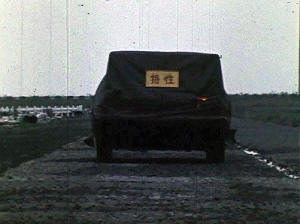
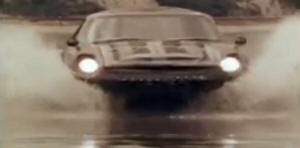 (Click here for full page video)
(Click here for full page video)240z (wearing a camouflage covering) going through its paces on the Oppama proving grounds. A circuit can be setup to include high-speed track, Belgium cobbles, and water zones.
Mr. Matsuo mentioned that competitors would spy from the hill near this test track.
Steering Testing
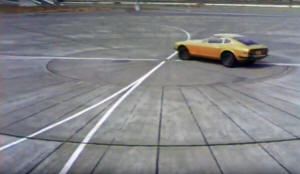
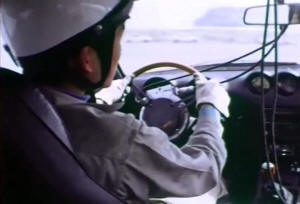 (Click here for full page video)
(Click here for full page video)240z on the skid pad with onboard sensors monitoring steering.
Road Testing
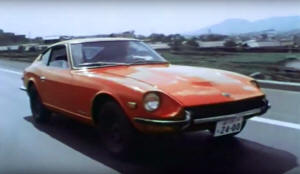 (Click here for full page video)
(Click here for full page video)LHD 240z's were driven on the roads of Japan as part of the testing and promotional programs.
Skirt Testing
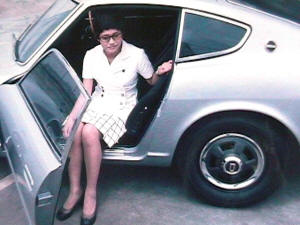
Skirts were also tested.
Interior Testing
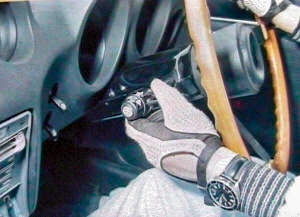
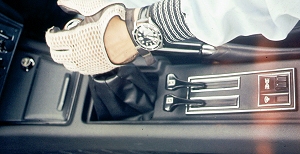
The multifunction "Combo Switch" was invented by Mr. Matsuo as part of his 240z design. The 240z was the first car to ever have this convenience that we all take for granted. He incorporated it because new US regulations for shoulder seat belts "pinned" the driver back from reaching controls typically on the dash. Retractable belts were not used during this time thus the requirement.
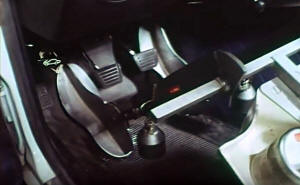
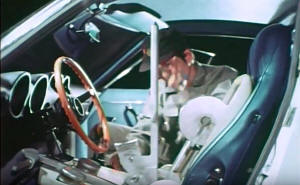 (Click here for full page video)
(Click here for full page video)Careful testing and measured verification of passenger fit are shown above. As the 240z was designed for the USA market, accommodations were made for the taller US citizens.
It is interesting to view the fog light switch, blue interior, seat belt hook, and rubber mats in the photos.
Frontal Crash Testing
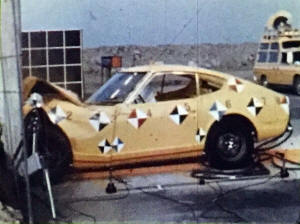
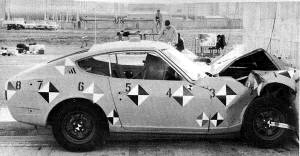
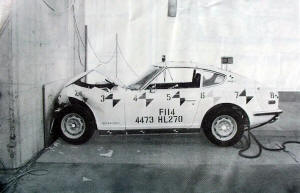
Note the differences between all frontal crash photos: car colour, quarter window treatments/vents, data cables, wheel types, target colours, mass locations, glass, exterior trim, interior trim.
All 4 cars are different! A total of 12 were crashed.
Roll Over Crash Testing
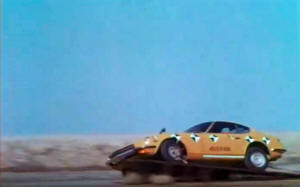
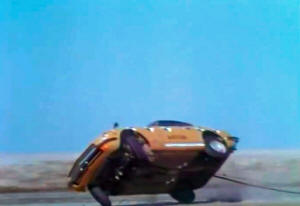
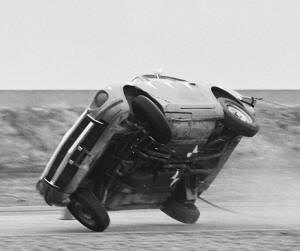 (Click here for full page video)
(Click here for full page video)Two more cars thrown to the lions. The writing on the wall was impending stringent crash and safety regulations in the USA. These intentions were communicated to automobile manufacturers by the US government in 1966.
Nissan's biggest sports car market suddenly became a difficult challenge as 99% of all Nissan sports cars were convertibles that would most likely fail the safety requirements or they would become too expensive or too heavy to meet them.
The only path for Nissan was to develop and produce a sports car in the form of a coupe. The USA Govt. and Ralph Nader may be as important to the existence of the 240z as any one at Nissan.
In 1970, Nissan ended all production of convertibles. The 240z was the new hope for continued expansion in the US sports car market.
Note the full grill on the black & white roll over photo. Mr. Matsuo said the lower grill was cut from the production model to save costs. The exhaust is also split all the way to the back and a DOHC Prince engine with triple Webers is tested. The front light lens also seems molded with the bucket and turn light.
Engine Testing
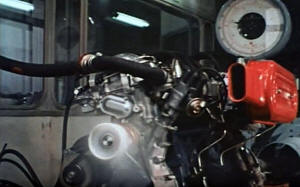 (Click here for full page video)
(Click here for full page video)L24 on Engine Dyno
Brake Testing
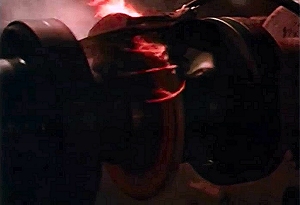 (Click here for full page video)
(Click here for full page video)Destructive Brake Testing
Suspension & Chassis Testing
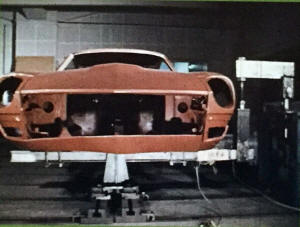
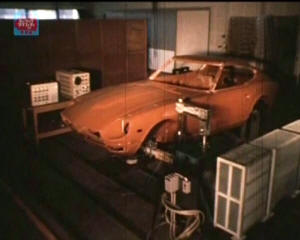
Two photos of one type of chassis testing.
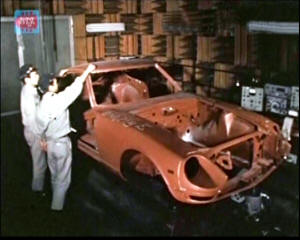
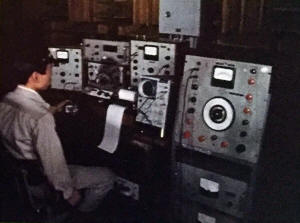
Two photos of another type of chassis testing.
_small.jpg) Click here for full
page video)
Click here for full
page video)Nissan suspension testing (not a 240z but period correct test jig).
Aerodynamic Testing (Scale Models)
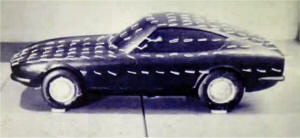
1/4 Scale model of 240z in wind tunnel at Tokyo University, December 1967.
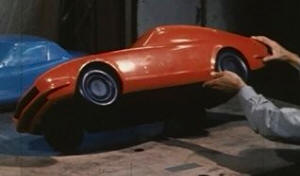
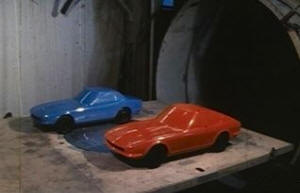
Scale model of 240z "fast back" and variant "coupe with trunk" undergoing tests in a wind tunnel.
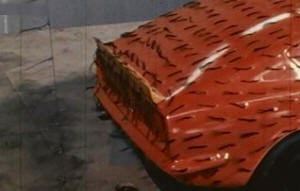
Testing Spoiler
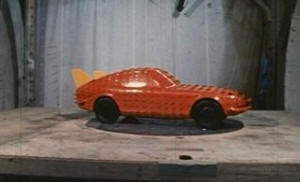
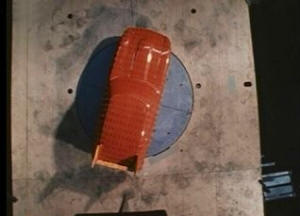
Batmobile? Let's hope this is for calibration or the missing upper wing is not yet installed. Maybe Chrysler saw this and developed the Superbird/ Challenger-Daytona?
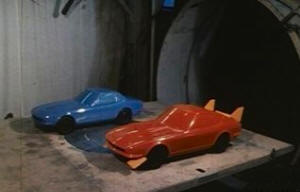
Chin Spoiler Testing

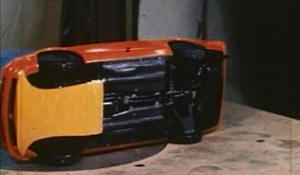
Bottom Panel Testing
Aerodynamic Testing (Full Size)
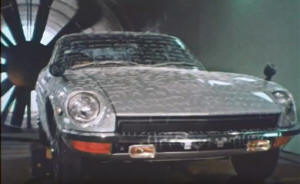
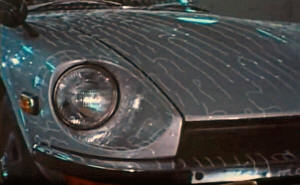
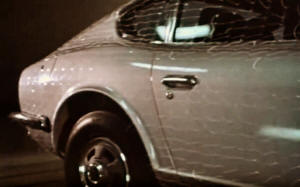
(Click here for full page video)
240z in Nissan's full-size wind tunnel at Chuo Kenkyujo. Small strings attached to the body show the direction of air flow on the surface. They also show areas of turbulence.
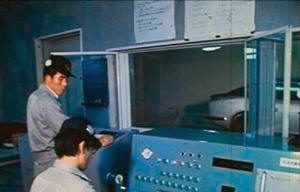
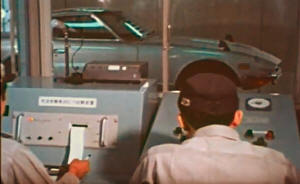
Wind tunnel control room.
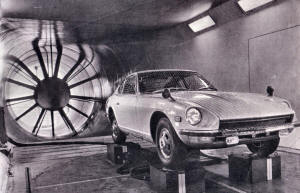

Details of testing including pressure sensors under the wheels.

Wind Test facilities in the region.
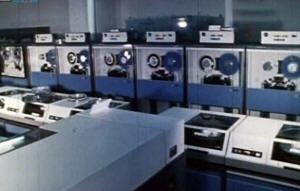
IBM System S/360 Computers used by Nissan for design and testing in the mid to late 1960's.
Test Cars
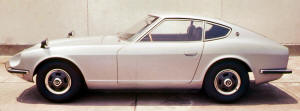


Photos of just two of the many prototypes used during testing in the mid to late 60's. These photos were taken on the roof of the design facility in 1968. The silver 240z is missing at least a gas tank and radiator. It seems to also have been used for the skirt testing.
The red targa variant sports a typical interior and a naval signal flag for the letter Z on the B Pillar.
Test Engines
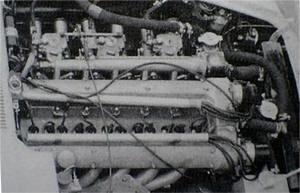
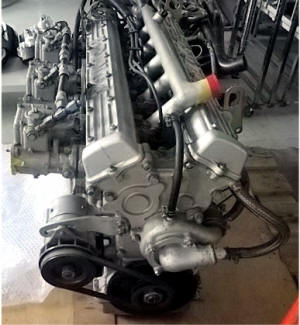
The 240z was tested in 1968 with several engines. One was a "G8B" DOHC Inline 6 with triple Webers producing 230HP.
Although difficult to track down the details of this engine, Nissan had available at that time the B680X engine with triple 42DCOE's and 12 plugs producing 190HP. They also had the GR-8 with triple 42DCOE's producing 200HP.
The S20 engine succeeded the GR-8 and was installed in a small batch of domestic market S30 chassis for racing (432-R) but for the later racing models (240zg), the S20 was skipped and these variants were fitted with L24A engines due to their equivalent power, simplicity, and economy. The USA variant was fitted with the L24A from the start.
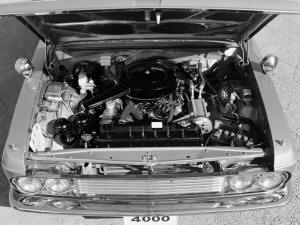
Given the proliferation of "Muscle Cars" in the USA in the mid-60's when the Z was being designed and sorted, many at Nissan expected the USA market to demand a V8. Nissan engineers had planned for this and had ensured the 240z included a wide transmission tunnel. They planned for the 240z to accept their high powered Y40 V8 engine from the Nissan President sedan coupled to a BW-35 automatic transmission . Although no testing of the combination occurred, above is a photo of a President Y40 V8 fitted to a 240z. It is reported the Ford "Y" engines have a similar form factor and would fit nicely in a 240z.
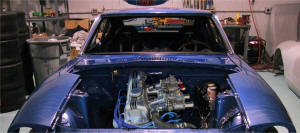
An L16A 4 cylinder engine was also tested in the 240z during the development period. No photos are yet available so above is a crude artist's rendition to tide you over.
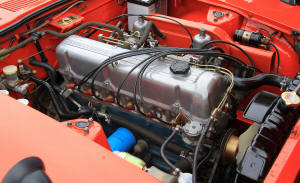
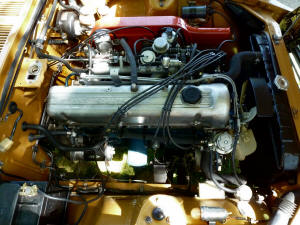
The 240z was also tested with L20A (2.0 litre) and L24A (2.4 litre) engines. These went on to become the stock engines fitted. The 2.0litre for Japan and the 2.4Litre for North America.
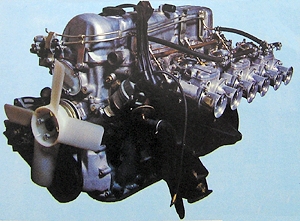
The 240z was also tested with triple Weber Side-Draught Carburetors.
Jump Testing
